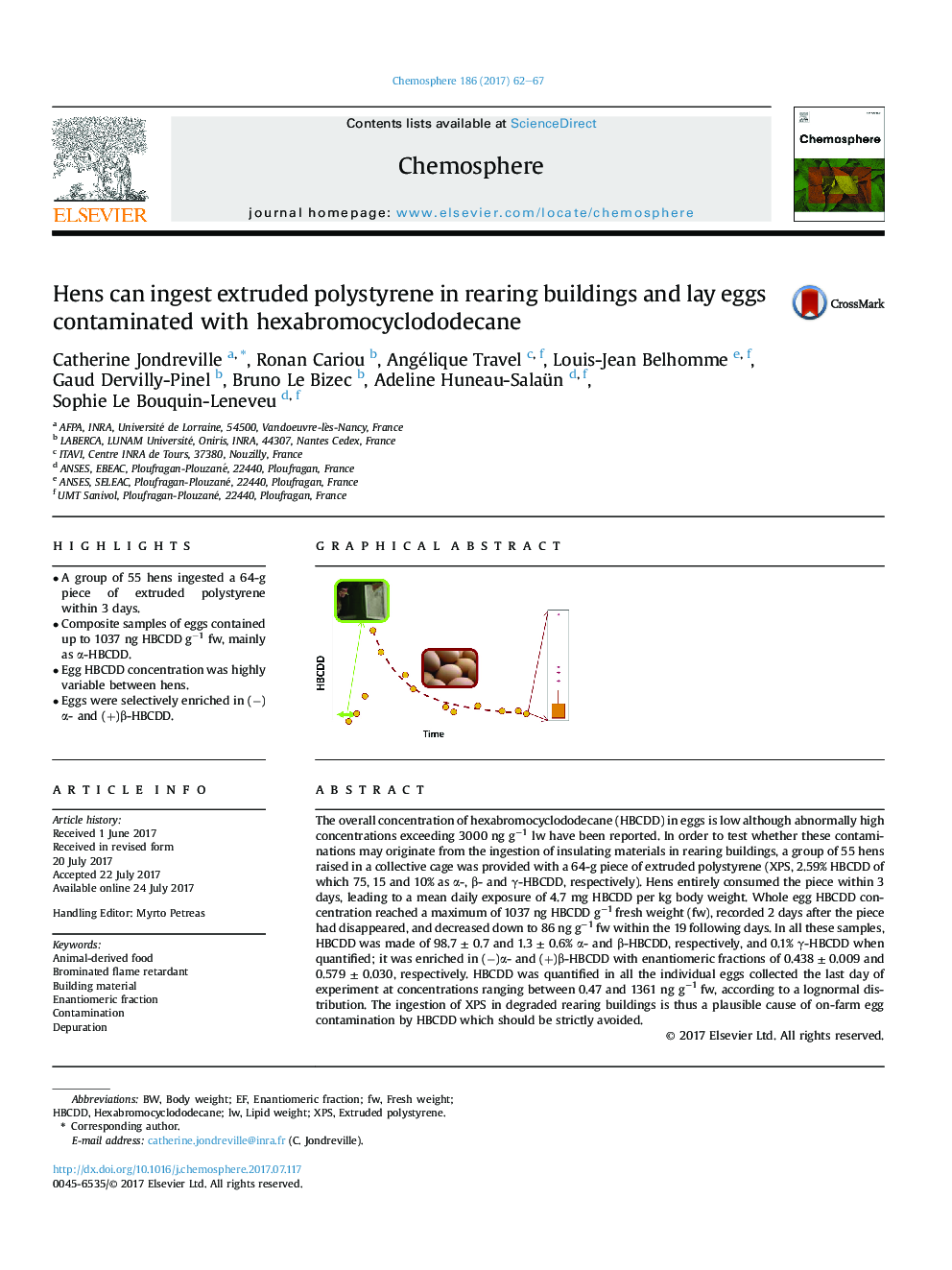| Article ID | Journal | Published Year | Pages | File Type |
|---|---|---|---|---|
| 5746009 | Chemosphere | 2017 | 6 Pages |
â¢A group of 55 hens ingested a 64-g piece of extruded polystyrene within 3 days.â¢Composite samples of eggs contained up to 1037 ng HBCDD gâ1 fw, mainly as α-HBCDD.â¢Egg HBCDD concentration was highly variable between hens.â¢Eggs were selectively enriched in (â)α- and (+)β-HBCDD.
The overall concentration of hexabromocyclododecane (HBCDD) in eggs is low although abnormally high concentrations exceeding 3000 ng gâ1 lw have been reported. In order to test whether these contaminations may originate from the ingestion of insulating materials in rearing buildings, a group of 55 hens raised in a collective cage was provided with a 64-g piece of extruded polystyrene (XPS, 2.59% HBCDD of which 75, 15 and 10% as α-, β- and γ-HBCDD, respectively). Hens entirely consumed the piece within 3 days, leading to a mean daily exposure of 4.7 mg HBCDD per kg body weight. Whole egg HBCDD concentration reached a maximum of 1037 ng HBCDD gâ1 fresh weight (fw), recorded 2 days after the piece had disappeared, and decreased down to 86 ng gâ1 fw within the 19 following days. In all these samples, HBCDD was made of 98.7 ± 0.7 and 1.3 ± 0.6% α- and β-HBCDD, respectively, and 0.1% γ-HBCDD when quantified; it was enriched in (â)α- and (+)β-HBCDD with enantiomeric fractions of 0.438 ± 0.009 and 0.579 ± 0.030, respectively. HBCDD was quantified in all the individual eggs collected the last day of experiment at concentrations ranging between 0.47 and 1361 ng gâ1 fw, according to a lognormal distribution. The ingestion of XPS in degraded rearing buildings is thus a plausible cause of on-farm egg contamination by HBCDD which should be strictly avoided.
Graphical abstractDownload high-res image (125KB)Download full-size image
